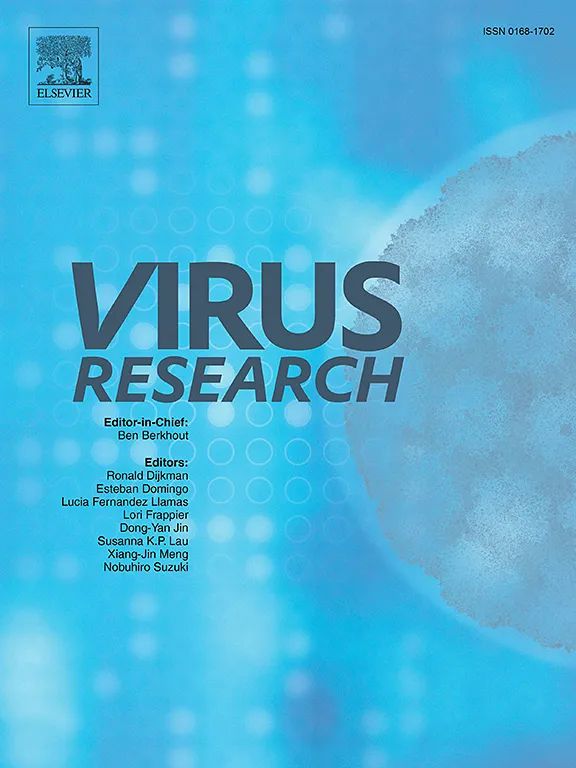The association between influenza infection and acute myocardial infarction: A comprehensive systematic review and meta-analysis
IF 2.7
4区 医学
Q3 VIROLOGY
引用次数: 0
Abstract
Influenza infection could be associated with several systemic complications, including acute myocardial infarction (AMI); however, evidence on this association remains inconsistent. This systematic review and meta-analysis examined the influenza-AMI link, temporal AMI risk post-infection, and in-hospital outcomes and mortality in influenza-infected AMI patients. We conducted a systematic search of PubMed, EMBASE, Cochrane Library, Scopus, and Web of Science. Observational studies and self-controlled case series (SCCS) designs, were included. Data were extracted and analyzed using random-effects models to calculate pooled odds ratios (ORs), incidence rate ratios (IRRs), and 95 % confidence intervals (CIs). Subgroup analyses were performed based on exposure definitions (laboratory-confirmed influenza vs. influenza-like illness [ILI]), study design, and temporal patterns of AMI risk. In-hospital outcomes, including mortality, complications, length of stay, and costs, were also evaluated. The meta-analysis included 17 studies. A significant association was found, with a pooled adjusted OR of 2.70 (95 % CI: 1.28–5.72). ILI showed a stronger association with AMI (aOR: 2.04; 95 % CI: 1.33–3.14) compared to laboratory-confirmed influenza. Temporal analyses from SCCS studies revealed a markedly increased risk of AMI within the first week post-infection, peaking in days 1–3 (IRR: 6.83; 95 % CI: 4.66–10.01) and gradually declining thereafter. Influenza-infected AMI patients had significantly worse in-hospital outcomes, including higher mortality (OR: 1.60; 95 % CI: 1.55–1.66), and multiorgan failure (OR: 2.90; 95 % CI: 2.79–3.01). Additionally, these patients experienced longer median hospital stays (8.8 days vs. 5.5 days) and higher hospitalization costs ($20,678 vs. $18,269) compared to non-influenza AMI patients. This study confirms a strong link between influenza and AMI, especially early post-infection. Influenza-infected AMI patients experience worse outcomes, longer hospital stays, and higher costs. These findings highlight the importance of influenza prevention strategies, including vaccination, particularly in high-risk groups, to reduce AMI risk and its cardiovascular burden.
流感感染与急性心肌梗死之间的关系:一项全面的系统回顾和荟萃分析。
流感感染可能与几种全身并发症有关,包括急性心肌梗死(AMI);然而,这种关联的证据仍然不一致。本系统综述和荟萃分析检查了流感与AMI的联系、感染后AMI的时间风险、流感感染AMI患者的住院结局和死亡率。我们对PubMed、EMBASE、Cochrane Library、Scopus和Web of Science进行了系统的检索。包括观察性研究和自我控制病例系列(SCCS)设计。提取数据并使用随机效应模型进行分析,计算合并优势比(ORs)、发病率比(IRRs)和95%置信区间(ci)。亚组分析基于暴露定义(实验室确认的流感vs.流感样疾病[ILI])、研究设计和AMI风险的时间模式。还评估了住院结果,包括死亡率、并发症、住院时间和费用。荟萃分析包括17项研究。两者之间存在显著相关性,合并校正OR为2.70 (95% CI: 1.28-5.72)。ILI与AMI有较强的相关性(aOR: 2.04;95% CI: 1.33-3.14),与实验室确诊的流感相比。SCCS研究的时间分析显示,感染后第一周内AMI的风险显著增加,在第1-3天达到高峰(IRR: 6.83;95% CI: 4.66-10.01),此后逐渐下降。流感感染的急性心肌梗死患者的住院结果明显更差,包括更高的死亡率(OR: 1.60;95% CI: 1.55-1.66)和多器官衰竭(OR: 2.90;95% ci: 2.79-3.01)。此外,与非流感AMI患者相比,这些患者的中位住院时间更长(8.8天对5.5天),住院费用更高(20,678美元对18,269美元)。这项研究证实了流感和急性心肌梗死之间的密切联系,尤其是感染后早期。流感感染的急性心肌梗死患者预后较差,住院时间较长,费用较高。这些发现强调了流感预防策略的重要性,包括疫苗接种,特别是在高危人群中,以减少AMI风险及其心血管负担。
本文章由计算机程序翻译,如有差异,请以英文原文为准。
求助全文
约1分钟内获得全文
求助全文
来源期刊

Virus research
医学-病毒学
CiteScore
9.50
自引率
2.00%
发文量
239
审稿时长
43 days
期刊介绍:
Virus Research provides a means of fast publication for original papers on fundamental research in virology. Contributions on new developments concerning virus structure, replication, pathogenesis and evolution are encouraged. These include reports describing virus morphology, the function and antigenic analysis of virus structural components, virus genome structure and expression, analysis on virus replication processes, virus evolution in connection with antiviral interventions, effects of viruses on their host cells, particularly on the immune system, and the pathogenesis of virus infections, including oncogene activation and transduction.
 求助内容:
求助内容: 应助结果提醒方式:
应助结果提醒方式:


